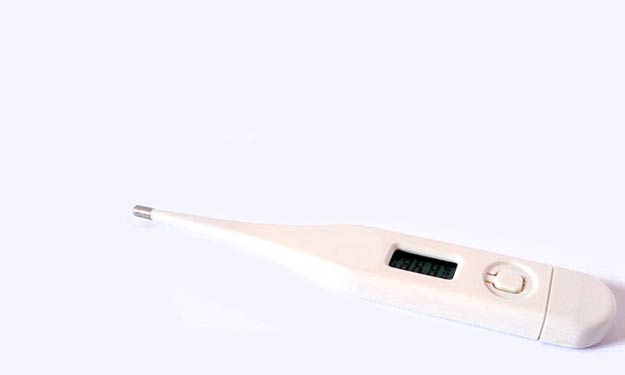Fevers
A fever occurs when the body temperature rises. Normal adult body temperature ranges between 98 and a 100 degrees Fahrenheit.
Normal body temperatures vary for many reasons including your age, the time of day, whether you are male or female, your activity level, and more.
Because of this a raised temperature is not always a fever; it could just mean its hot outside.
Fevers in Children:
Healthcare professionals recommend that a baby less than six months old be seen by a doctor anytime the fever is at least 101 degrees. At ages over six months, some healthcare practitioners suggest that parents not bring their children in until the fever is over 103 degrees.
Typically it is believed that fevers lower than these numbers can be beneficial as it works to kill bacteria and other conditions that can cause illness. It is recommended that you discuss with your healthcare provider at what point an infant or child with a fever should be taken to the doctor. In childhood one of the most over-treated conditions is fever.
Parents need to understand that a fever is not a disease, but one of the body’s strongest weapons for dealing with infections. A fever will also raise the body’s natural antiviral and antibacterial substances that occur naturally in the blood. Fevers increase the white blood cell count, which will help the body kill cells that are infected with viruses and bacteria. Often the best reaction is to let a fever run its course.
Natural Remedies for Fevers:
There are some things that can be done naturally to help bring fevers down. Most of these work for both children and adults.
Personal Care and Environment:
Someone who has a fever should be dressed in lightweight clothing. Items like socks, a hat, slippers, and heavier clothing items should be removed in order to allow heat loss through the skin. If the patient is chilled or shivering, yet has a fever, it is okay to cover them with a lightweight blanket or sheet, leaving the feet and head exposed for maximum heat dissipation. Those with a fever should be kept still and quiet as activity will actually increase their body temperature.
They should be given extra fluids in order to stay dehydrated. The fluids can be in the form of water, cold drinks, juices, and even Jello. It is better to use fluids that don’t contain added sugar. However if you don’t have anything else or a child won’t drink anything else, even sugared drinks are better than nothing as dehydration can occur rapidly when someone has a high fever.
With small children it is good to have them drink an electrolyte drink like Pedialyte, especially if the fever lasts for longer than a few hours. Adults should also replenish their electrolytes. Watered down sports drinks can be good for this.
Lukewarm Bath:
One option for high fevers is to take a sponge bath in a few inches of lukewarm (not cold) bath water. Sit in a few inches of water and use your hand, a wash rag, or a clean sponge to sluice the water over your body for a few minutes. Make sure to dry completely and put on loose, clean clothes.
Garlic Poultice:
Garlic is very helpful in bringing down a fever. To make a garlic poultice, put a handful of fresh garlic cloves in the blender. There should be enough to make a paste that will spread about 1/4 inch thick.
Take two sections of gauze, each large enough to cover the sole of one foot. Take a little olive oil and coat the bottom of each foot prior to adding the garlic so it doesn’t irritate the skin.
Now take each section of gauze, spread with the garlic paste, and place over the soles. Keep the pads in place by wrapping lightly with more gauze. Leave a little space at the top of the sole free of the poultice and gauze so there is someplace for heat to escape from. Leave the pads on while you sleep.



